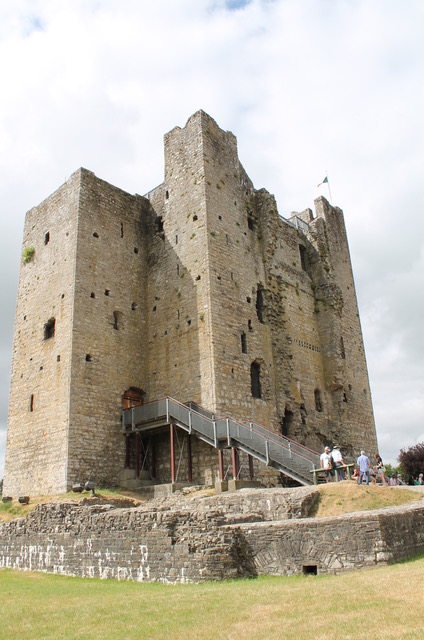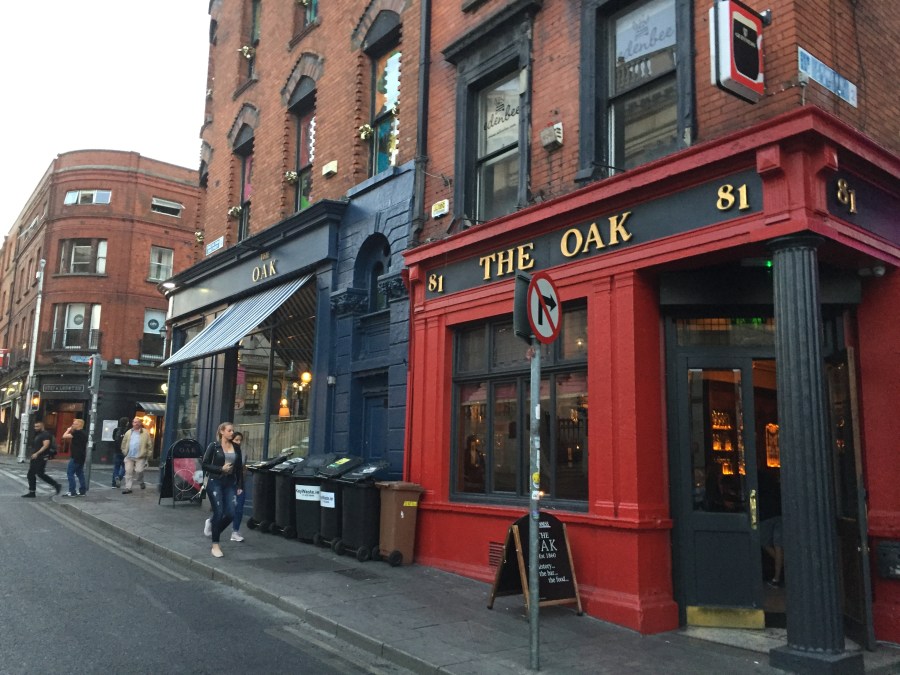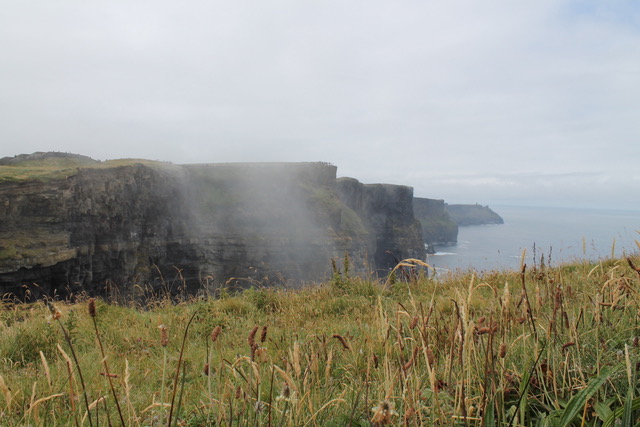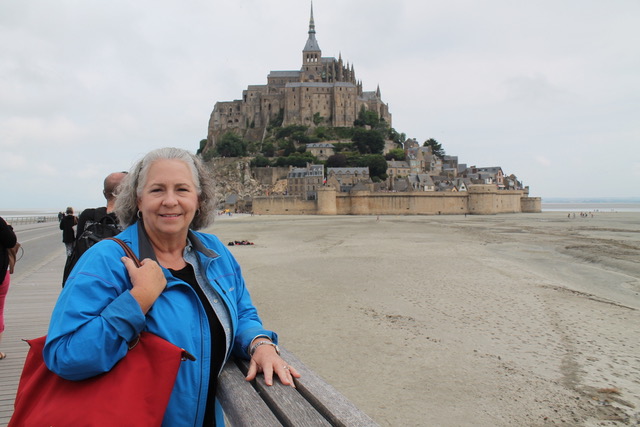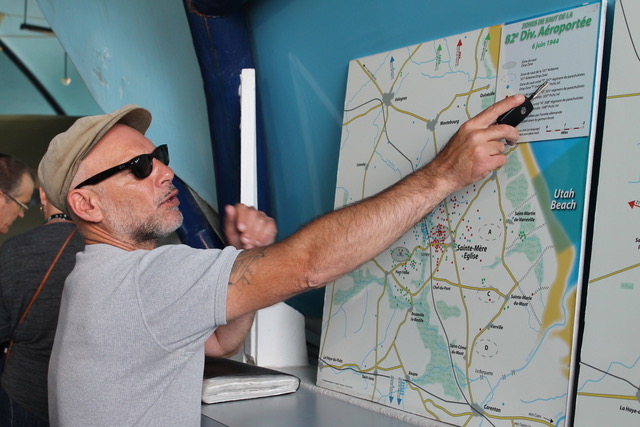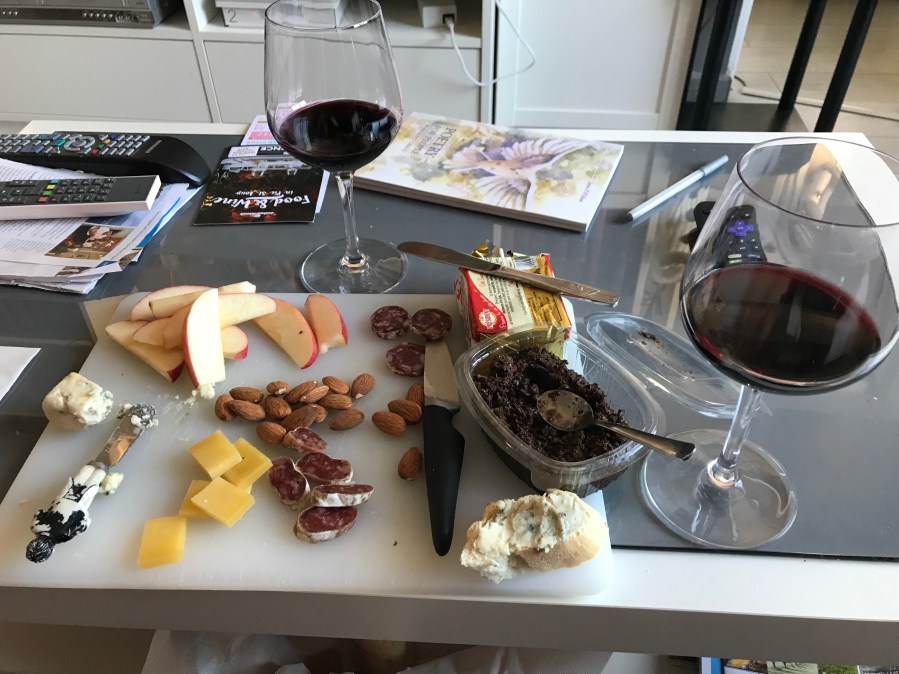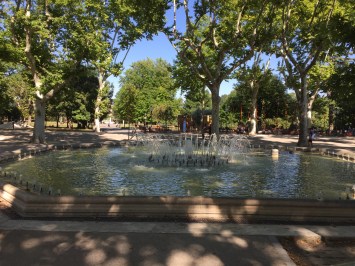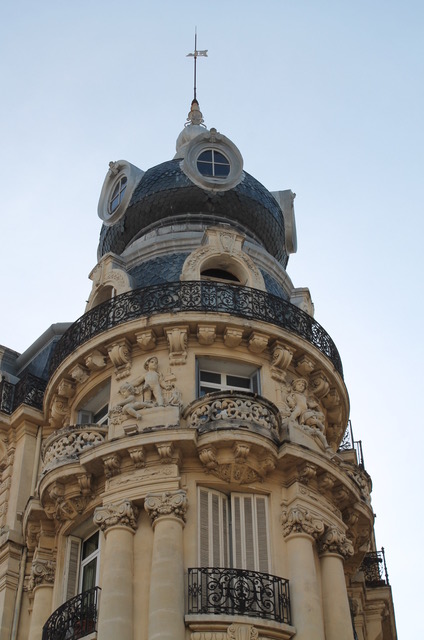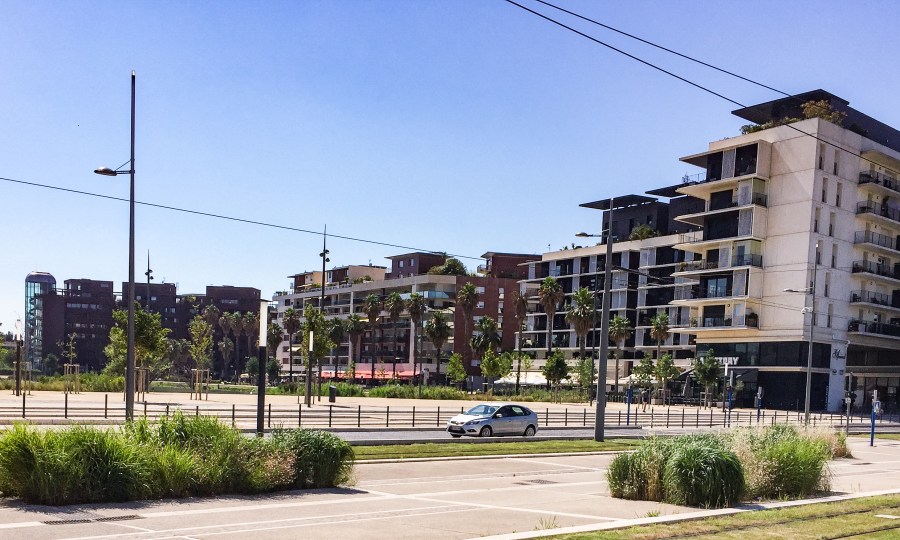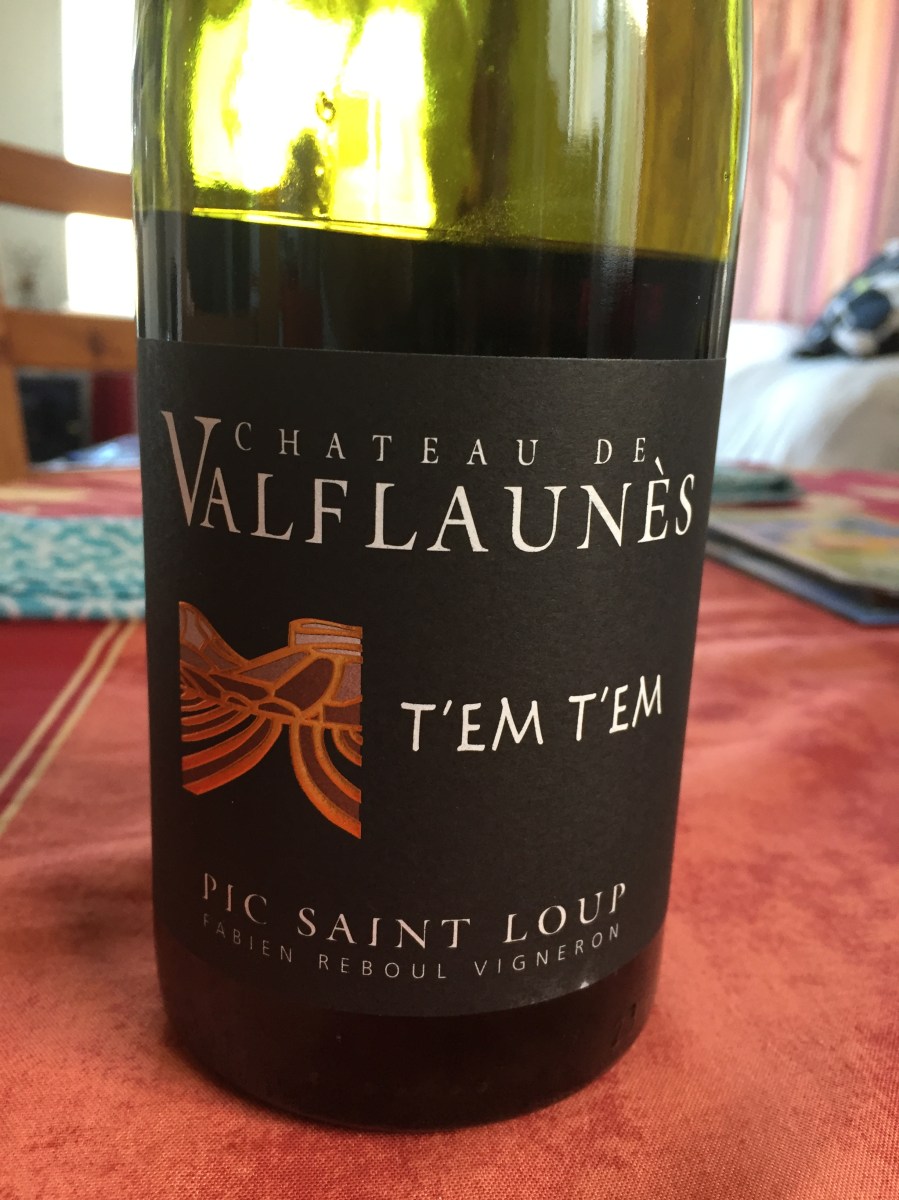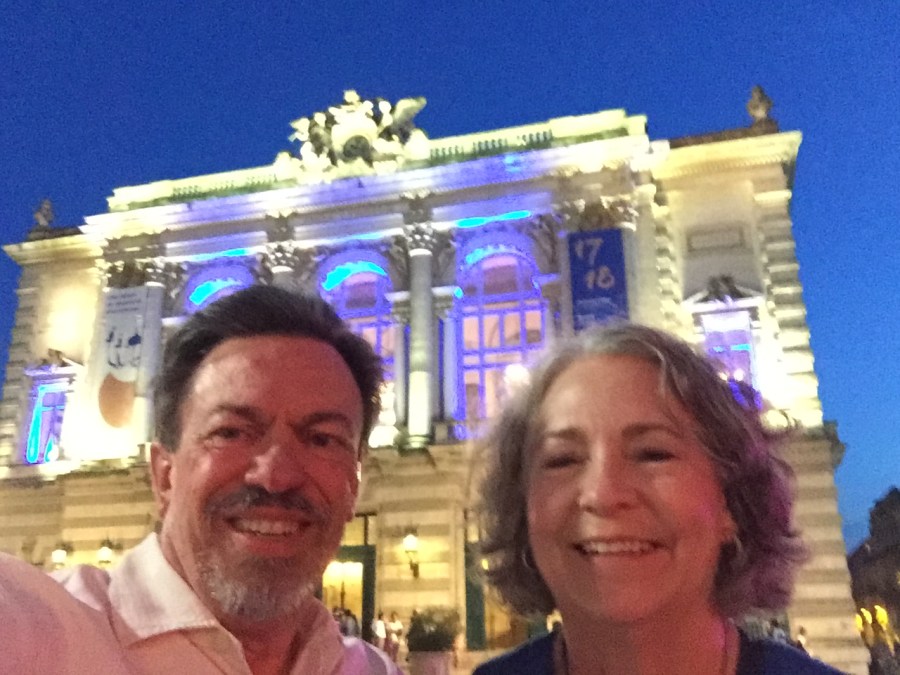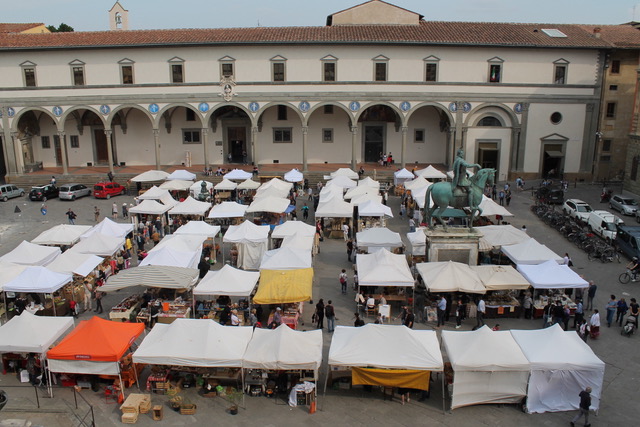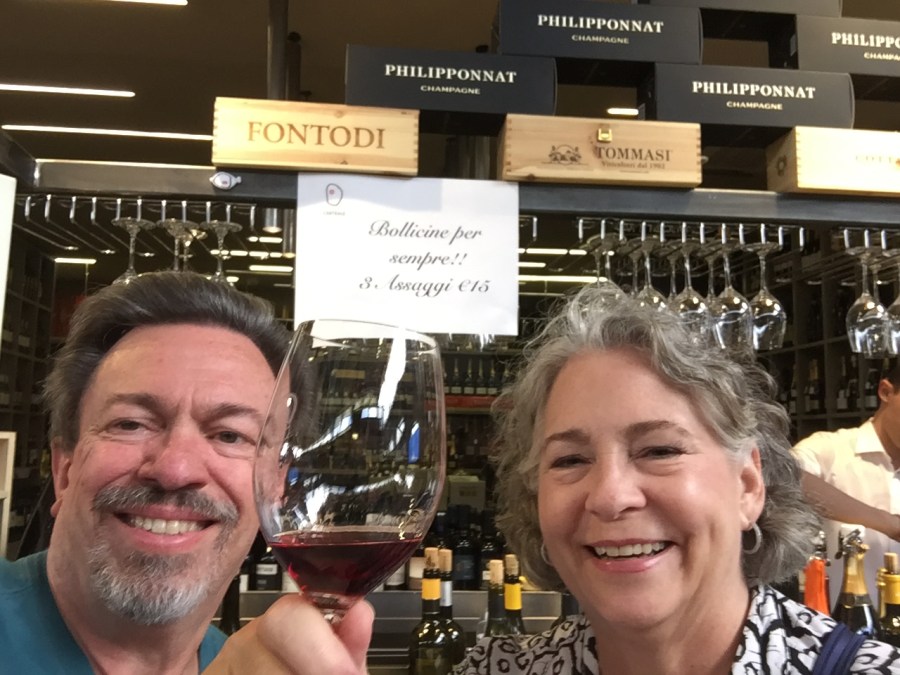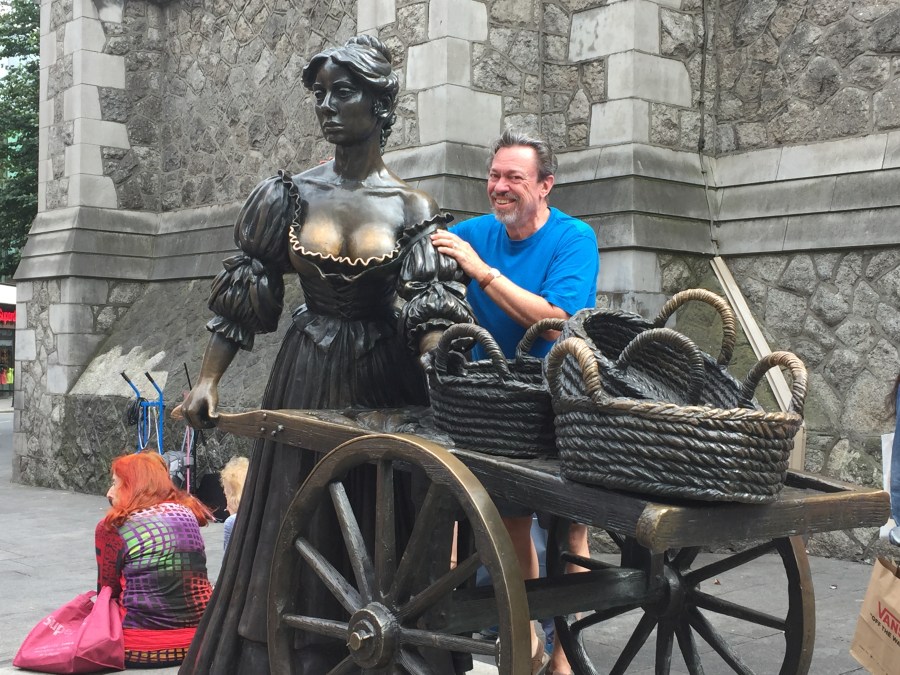
Dia dhuit!
Leslie and I are excited to be in a country where they speak English. (Irish too, such as the “hello” greeting above and “goodbye” at the end, but mainly English.) We decided to close our second European visit with a few days as tourists in Dublin. We’ve learned a lot about the home of some of our ancestors (Mike: Ireland, Scotland, Wales; Leslie: Ireland, Scotland, Hungary).

We started out at Trinity College Dublin to see The Book of Kells, a ninth-century illuminated version, in Latin, of the four New Testament gospels. It’s hard to believe, as you gaze upon this treasure, that someone did this intricate work over 1,000 years ago. It’s beautiful. After you see the book, you can wander in The Long Room section of the college’s Old Library and see books that date back hundreds of years.
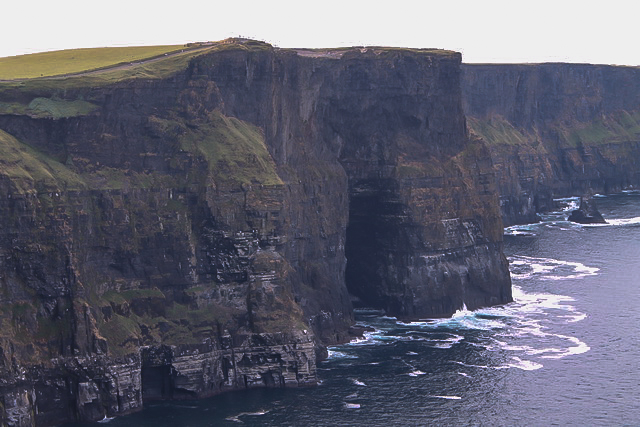
From Dublin it’s a very long bus ride to the Cliffs of Moher, a stunning display of God’s handiwork along Ireland’s wild west coast. The visitor center has videos to watch and displays to peruse. This can be helpful when it’s cold and rainy and the clouds drift down toward the sea, restricting visibility. We spent a few minutes checking out the center, then wandered outside to find “peeks of sun,” as we say in Chicago. It wasn’t long before the clouds parted and the views were awesome! We were forced to take off our rain gear because it was getting too hot. Just like Chicago — if you don’t like the weather, wait. It’ll change.

Then we visited the Hill of Tara, the political center of ancient Ireland, and also Uisneach, the spiritual center. Tara is where the Irish High King ruled. We saw a neolithic burial mound as well as a ring fort where the High King’s family may have lived. Our guide, John, said the Irish kings were chosen to be tribal leaders. It was not necessarily a hereditary office. The king was merely the best person for the job at the time. The Hill of Tara is important to Irish politics because it was central to the Irish Rebellion of 1789. British forces won a battle at the Hill of Tara, killing almost 400 rebels. A plaque commemorates their loss.

Uisneach is on private land, owned by the family that runs the largest dairy farm in Ireland. Here we were joined by Simon, whose knowledge of Irish mythology and folklore is amazing. He loves telling the old stories of Lough and Èriu. Uisneach is also the site of an annual fire celebration, such as the 2017 event in the video on this site. Watch the video carefully at the :36 mark and again at :57 to get a glimpse of a very short man with white hair on the sides of his head and none at all on top. That’s Michael Higgins, president of Ireland.

In Ireland, fairies are an important part of the culture and the folklore, but they’re nothing at all like Tinker Bell. Simon showed us a fairy tree, which is merely a hawthorn tree standing in a field by itself, sometimes with large stones underneath. Simon said the Irish are not superstitious, but they will never cut down a fairy tree. He told us two stories. One was about a motorway (we call it a tollway) the government wanted to build. But the plan required cutting down a fairy tree, and none of the site workers would do it. Eventually they changed the motorway route and the tree still stands today.

The other story is about how a fairy tree was actually cut down to build the DeLorean Motor Co. plant in Ireland. Is DeLorean still in business? Of course not, and the Irish say it’s because the company cut down a fairy tree. No, the people of Ireland are not superstitious, but they will not mess with fairies. Better to be on the safe side.
They don’t mess with leprechauns either, and while we didn’t get much instruction in these little fellows, Simon did say that they cannot be trusted. If you catch one, he must give you his crock o’ gold. But they’re crafty and will try to cheat you out of it. Simon’s advice was: If you see a little man in a field or a wood repairing shoes, just keep walking.

Loughcrew is yet another spot that evokes ancient Ireland. We had to climb a sizable hill, dodging sheep (and sheep droppings) on the way up, to see Cairn T, also known as Hag’s Cairn. It’s called that because of a large stone bench used by a giant witch who wanted to rule all of Ireland. The people agreed, provided she could leap from one mountain to another carrying rocks in her skirt. She failed, and you can see where she spilled the rocks all over what’s now Hag’s Cairn. Our guide, John, said many burial sites have been robbed of stones over the centuries, mostly by people who simply wanted to build a stone fence and were unaware of the historical significance of these tombs. But all the stones are still on the Hag’s Cairn. Remember, Irish people aren’t superstitious. They just won’t do anything that might make the witch mad. Why take a chance?

We squeezed into the small megalithic burial chamber under the mound to see symbols carved into the rock. As dawn breaks on the spring and autumn equinoxes, the sun’s rays fall perfectly on the the first symbol, then move up the rock to the next ones. John said this was a calendar for the ancient people. It told them when to plant and when to harvest.
Leslie and I got our fill of great Irish food in a few Dublin pubs John recommended on the bus ride back from Loughcrew. The Oak dates to 1860, and Stag’s Head (which has an actual stag’s head over the bar) is in Dame Court where a pub has stood, in one form or another, since the 18th century. I admired the wood, mostly original, used to build the bars in these two pubs. Outstanding craftsmanship. But if you ever get to Dublin, go to the Temple Bar area and look for Boxty House. Best corned beef I ever ate.
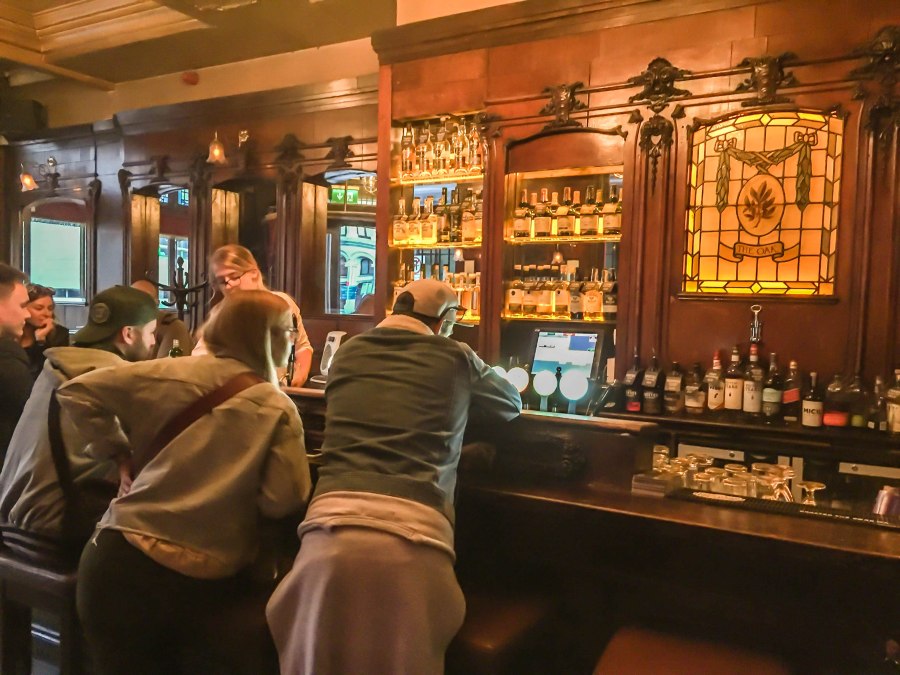
We head back to the U.S. to visit family and friends, see some doctors and decide where we’re going to live now that the two-year Vagabond mission is over. What will our choice be? Looks like it’s down to two very different cities. It’s not going to be an easy decision. We’ll keep you posted.
Meanwhile, enjoy more photos of Ireland.
Slán!

